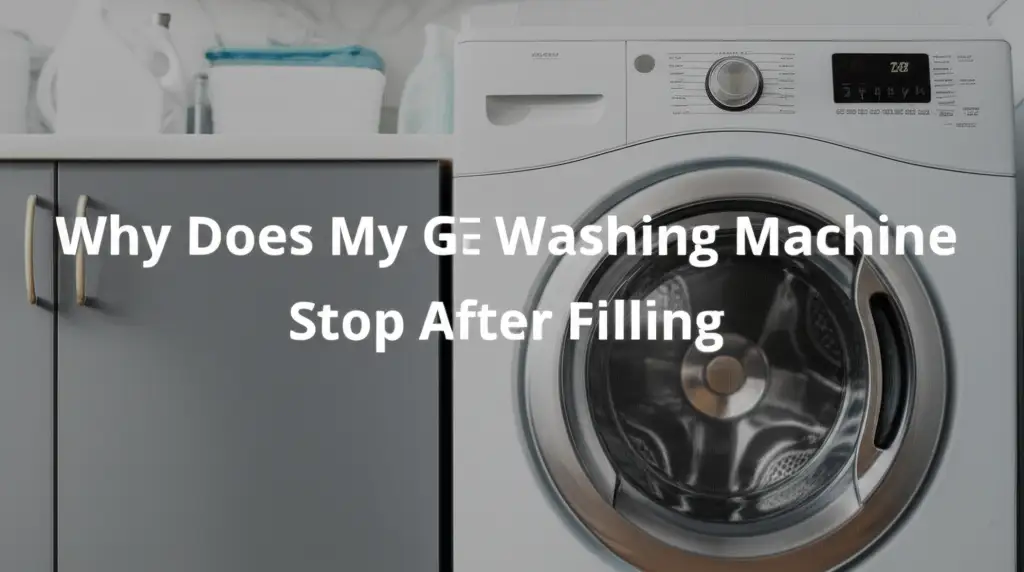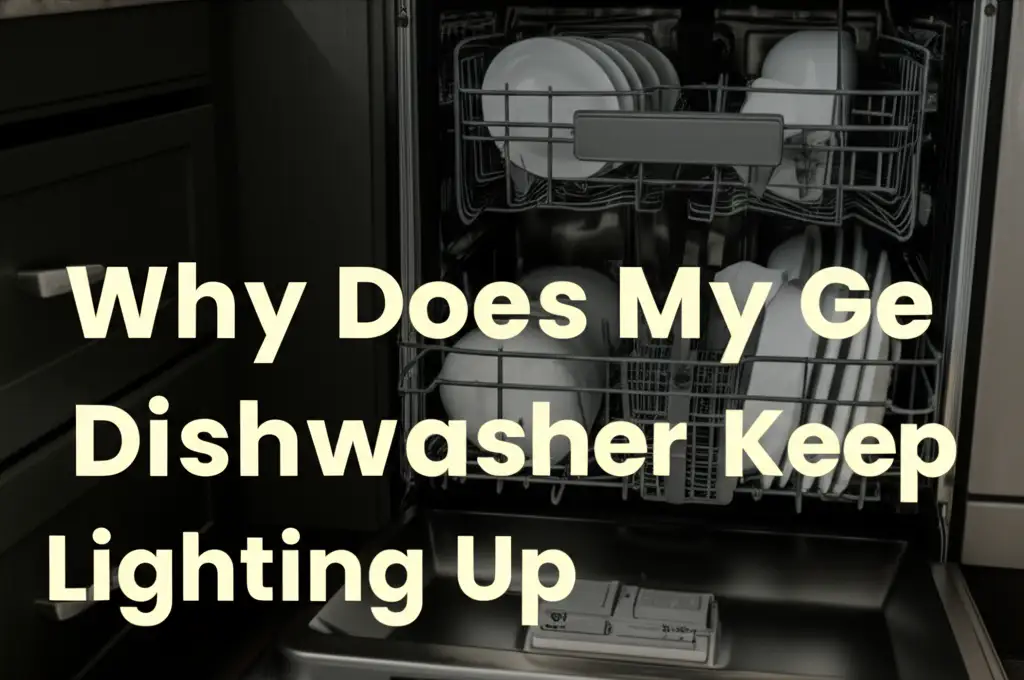· Todd Martin · Appliance Repair · 19 min read
How To Reset Kenmore Washing Machine Front Loader

Reset Your Kenmore Front Loader: A Complete Guide
Have you ever faced a puzzling issue with your Kenmore washing machine front loader? Perhaps a blinking error code has appeared. Maybe the cycle has suddenly stopped, leaving your clothes soaking wet. These are common frustrations for many homeowners. I know I have certainly experienced these moments of appliance confusion.
Fortunately, many such problems are not serious breakdowns. Often, a simple reset can resolve these issues. This guide will walk you through the precise steps to reset your Kenmore washing machine front loader. We will cover basic power cycles and more advanced troubleshooting techniques. My goal is to help you get your laundry routine back on track efficiently. We will also explore common reasons a reset is needed and how to prevent future problems.
Takeaway
- Power Cycle First: Unplug your machine for 1-5 minutes to perform the simplest reset.
- Check User Manual: Consult your manual for model-specific reset button sequences.
- Troubleshoot Basics: Before resetting, check water supply, drainage, and door latch.
- Understand Error Codes: Identify codes to determine if a reset or repair is needed.
- Regular Maintenance: Keep your Kenmore clean to prevent issues and the need for frequent resets.
Quick Answer: Resetting Your Kenmore Front Loader
To reset your Kenmore washing machine front loader, unplug the machine from the power outlet for at least one minute. Plug it back in to perform a basic power cycle reset. For specific models, you may need to press a combination of buttons like “Pause/Cancel” or “Cycle End” for a few seconds.
Why Your Kenmore Front Loader Needs a Reset
Washing machines are complex appliances. They rely on electronic controls and sensors to operate correctly. Sometimes, these systems can encounter temporary glitches. This can happen due to power fluctuations or internal software errors. Your Kenmore front loader might freeze mid-cycle. It might display a confusing error code. Or it may become unresponsive to commands. These are all signals that a reset could be beneficial.
A reset acts like a reboot for your washing machine’s brain. It clears any temporary data or conflicting instructions. It allows the control board to restart fresh. Think of it like restarting your computer when it acts up. It does not fix mechanical problems, but it can resolve many electronic hiccups. I have found this simple step often saves me a service call. Understanding why your machine is acting up is the first step toward a solution.
Common reasons for needing to reset your Kenmore front loader include:
- Error Codes: The display shows “F” codes or other alphanumeric messages. These indicate specific problems that might be resolved by a reset.
- Unresponsive Controls: Buttons do not work, or the machine does not start a cycle. This suggests a control panel or software issue.
- Stuck Cycles: The wash cycle stops midway and will not advance. Water might remain in the drum.
- Power Surges: A brief interruption or fluctuation in electrical power can scramble the machine’s programming.
- Overload: Sometimes, overloading the machine can confuse its sensors. A reset can clear this state.
A reset allows the control board to re-evaluate its state. It can often clear minor faults. This makes it an essential first troubleshooting step. Always start with the simplest solution.
The Universal Power Cycle Reset for Kenmore Front Loaders
The most common and often effective way to reset any electronic appliance, including your Kenmore washing machine front loader, is a power cycle. This method is universal and applies to most models. It cuts off all power, forcing the machine’s internal computer to reboot from scratch. I always start with this method when my washing machine acts up. It is quick and requires no tools.
To perform a power cycle reset, follow these simple steps:
- Locate the Power Cord: Your washing machine’s power cord usually plugs into a standard wall outlet behind the appliance. Make sure you can safely reach it.
- Unplug the Machine: Carefully pull the power cord directly from the wall outlet. Do not just turn off the machine using the power button. You need to completely cut off the electrical supply. This ensures the control board loses all residual power.
- Wait for 1 to 5 Minutes: This waiting period is crucial. It allows any capacitors inside the machine to discharge fully. It ensures the control board’s memory is cleared. Some technicians recommend a full 5 minutes for a complete discharge. I usually wait at least a minute, and often longer if I am doing other checks.
- Plug the Machine Back In: Firmly insert the power cord back into the wall outlet. Ensure it is securely seated.
- Test the Machine: Try to start a new cycle or resume your previous one. See if the error code has cleared or if the machine responds correctly.
This simple power cycle resolves many issues. These issues include minor electronic glitches, frozen displays, and temporary unresponsiveness. It is the first thing I recommend to anyone facing a Kenmore front loader problem. Many general washing machine problems can be fixed with this basic step. For deeper cleaning steps that can prevent issues, you might want to learn how to clean your washer machine front loader.
Performing a Hard Reset on Specific Kenmore Front Loader Models
While the power cycle is a great first step, some Kenmore front loader models may require a more specific “hard reset” or button sequence reset. These resets are often designed to clear deeper software glitches or force a factory reset state. It is important to know your specific Kenmore model number for these steps. This information is usually found on a sticker inside the door or on the back of the machine.
Different Kenmore models, especially those manufactured by Whirlpool, LG, or Samsung for Kenmore, might have unique reset procedures. I have found that my older Kenmore machine had a different sequence than a newer one. Always consult your user manual first. It provides the most accurate instructions for your specific model. If you do not have the manual, you can often find it online by searching your model number.
Here are common button sequences found on various Kenmore front loader models:
- “Pause/Cancel” or “Cancel” Button Reset:
- Press and hold the “Pause/Cancel” button (or just “Cancel” on some models) for 3 to 10 seconds.
- You might hear a beep, or the display might flash. This indicates the reset is taking place.
- Release the button and wait a few moments. Then, try to start a new cycle. This method often clears active error codes.
- Specific Button Combinations (e.g., Cycle + Spin Speed):
- Some models require holding two specific buttons simultaneously. For example, “Rinse/Spin” and “Temp” for 5 seconds.
- Another common one is turning the cycle knob to a specific position (e.g., “Drain & Spin”), then pressing certain buttons repeatedly.
- These sequences vary greatly. They are usually found in the “Troubleshooting” section of your appliance manual.
- Diagnostic Mode Reset:
- Some Kenmore machines have a diagnostic mode. Entering this mode can sometimes clear persistent errors.
- The entry sequence often involves turning the cycle selector knob to specific positions and pressing buttons.
- Once in diagnostic mode, there might be an option to clear codes or perform a factory reset. Be cautious when using this mode. Follow the manual closely.
If these hard resets do not work, the problem might be more complex. It could point to a faulty control board or another component. Remember, a reset is designed for software glitches. It cannot fix a broken motor or a clogged drain pump. If you are experiencing issues like water not draining, it might be a different problem altogether, and you can investigate why your Kenmore washing machine is not draining.
Troubleshooting Common Issues Before Resetting Your Kenmore
Before you even attempt a reset on your Kenmore washing machine front loader, it is wise to perform some basic troubleshooting steps. Sometimes, what seems like a control board error is actually a simple mechanical or setup issue. I always check these simple things first. They can save you time and frustration. A reset will not fix a problem if the underlying cause is something physical.
Here are essential checks to make:
- Door Latch and Seal:
- Check the Door: Ensure the washer door is fully closed and latched. Front loaders have safety mechanisms that prevent operation if the door is not secure. A slightly ajar door will prevent the cycle from starting or continuing.
- Inspect the Latch: Look for any damage to the door latch mechanism. A broken latch might prevent proper closure.
- Gasket Check: Inspect the rubber gasket around the door. Sometimes, small items get stuck in it. This prevents a complete seal. This could cause leaks or incomplete cycles.
- Water Supply and Hoses:
- Check Water Faucets: Ensure both hot and cold water supply faucets are fully open. If one is closed, the machine might struggle to fill properly.
- Inspect Hoses: Look for kinks or blockages in the water inlet hoses. Kinked hoses restrict water flow. This leads to long fill times or error codes.
- Filter Screens: There are small filter screens where the hoses connect to the washer. These can get clogged with sediment. Turn off the water, disconnect the hoses, and clean these screens if necessary.
- Drainage System:
- Drain Hose: Check the drain hose for kinks or blockages. Ensure it is properly inserted into the standpipe or laundry tub.
- Drain Pump Filter: Many front loaders have a drain pump filter, usually located at the bottom front of the machine behind a small access panel. This filter can become clogged with lint, coins, or small items. A clogged filter severely impacts drainage. Refer to your manual for its exact location and how to clean it. Cleaning this filter is a common fix for drainage issues. It is a vital part of regular maintenance, similar to how one might need to clean a GE washing machine front loader.
- Power and Circuit Breaker:
- Check the Outlet: Ensure the outlet itself has power. You can test it by plugging in another appliance.
- Circuit Breaker: Go to your home’s electrical panel. Check if the circuit breaker for the laundry room or washing machine has tripped. Reset it if it has.
By addressing these basic issues first, you might find that a reset is not even necessary. It saves you time and helps pinpoint the real problem. If these checks are clear and the problem persists, then a reset is the next logical step.
When a Reset Isn’t Enough: Deeper Diagnostics
A reset is a powerful tool for electronic glitches. However, it is not a cure-all. Sometimes, your Kenmore washing machine front loader might have a problem that a simple power cycle or button sequence cannot fix. These are typically mechanical failures or more serious electronic component issues. When a reset does not resolve the problem, it is time for deeper diagnostics. I have learned that ignoring persistent issues can lead to bigger repairs down the line.
Here are signs that your problem goes beyond a simple reset:
- Persistent Error Codes: If an error code immediately reappears after a reset, it points to an ongoing issue. This could be a faulty sensor, a motor problem, or a control board failure. You need to look up the specific code in your manual to understand its meaning.
- Unusual Noises: Grinding, banging, squealing, or loud humming noises usually indicate a mechanical issue. This could be problems with the bearings, motor, pump, or suspension. A reset will not quiet these sounds.
- Water Leaks: Leaks suggest problems with hoses, seals, the pump, or the tub itself. A reset does not fix physical leaks. If your Kenmore washing machine is leaking from the bottom, it is a mechanical issue.
- No Power at All: If the machine shows no signs of life after ensuring the outlet works and the breaker is on, it might be a main control board or wiring issue.
- Burning Smells: Any burning smell indicates an electrical component is overheating. Immediately unplug the machine and do not use it. This is a fire hazard.
When these symptoms appear, consider these deeper diagnostic steps:
- Consult the User Manual for Error Codes: The manual is your best friend here. It lists specific error codes and their likely causes. It often provides troubleshooting steps beyond a simple reset. For example, an “F7” error might indicate a motor control problem, not just a software glitch.
- Inspect Internal Components: If you are comfortable, you can inspect certain internal parts.
- Drain Pump: Check if the drain pump is operating. Listen for its sound. If it is humming but not draining, it might be clogged or faulty.
- Motor: Look for signs of wear or burning on the motor.
- Control Board: Visually inspect the main control board for burnt components, loose connections, or corrosion. Caution: This involves working with electrical components. Only do this if you are experienced and have unplugged the machine.
- Water Inlet Valves: Check if the screens are clear and the valves are opening and closing correctly.
- Seek Professional Help: If the problem persists after basic troubleshooting and a reset, or if you suspect a major component failure, it is time to call a qualified appliance technician. Attempting complex repairs without experience can cause more damage or pose safety risks.
Remember, a reset is for the brain. If the body is sick, you need a different kind of treatment. Recognizing the limits of a reset helps you avoid frustration and get the right solution for your Kenmore front loader.
Maintaining Your Kenmore Front Loader to Prevent Future Resets
Prevention is always better than cure, especially when it comes to home appliances. Regular maintenance of your Kenmore washing machine front loader can significantly reduce the need for resets and prolong its lifespan. Many common issues that lead to error codes or unresponsiveness are a direct result of neglect. I make sure to follow a consistent maintenance routine for my own washer. It keeps it running smoothly.
Here are key maintenance practices to adopt:
- Regular Cleaning of the Drum:
- Washer Cleaning Cycle: Most Kenmore front loaders have a “Clean Washer” or “Tub Clean” cycle. Use this cycle once a month. It uses hot water and high spin speeds to remove detergent residue and mildew.
- Cleaning Products: Use a dedicated washing machine cleaner or a mixture of white vinegar and baking soda during this cycle. This helps eliminate odors and buildup. For thorough cleaning, you might also want to consult guides on how to deep clean a washing machine front loader.
- Gasket (Door Seal) Care:
- Wipe After Each Use: After every wash, wipe down the rubber door gasket. This prevents mold, mildew, and unpleasant odors from building up. Use a damp cloth and then dry it thoroughly.
- Inspect for Debris: Regularly check for small items like coins, hairpins, or lint trapped in the gasket folds. These can cause leaks or tear the seal.
- Leave Door Ajar: When not in use, leave the washer door slightly ajar. This allows air to circulate and prevents moisture buildup inside the drum and gasket.
- Detergent Dispenser Cleaning:
- Remove and Clean: The detergent dispenser drawer can accumulate soap scum and mold. Remove it if possible and wash it thoroughly under warm water. Use a brush to get into crevices.
- Wipe Housing: Wipe the area where the dispenser sits in the machine.
- Drain Pump Filter Cleaning:
- Monthly or Bi-Monthly: This filter, usually located at the bottom front, traps lint and small objects. Clean it regularly (monthly or bi-monthly, depending on usage). This prevents drainage issues and pump strain. Have a shallow pan and towel ready to catch water.
- Use Proper Detergent and Amount:
- HE Detergent: Always use High-Efficiency (HE) detergent in a front loader. HE detergents produce less suds, which is crucial for these machines. Excessive suds can cause oversudsing errors and damage components.
- Correct Amount: Do not overfill the detergent dispenser. Use only the recommended amount. More detergent does not mean cleaner clothes. It leads to residue buildup.
- Load Size Management:
- Do Not Overload: Overloading the machine can strain the motor, bearings, and suspension. It can also cause clothes to not spin out properly, leading to unbalanced loads and error codes. Leave enough space for clothes to tumble freely.
- Check Hoses and Connections:
- Periodically Inspect: Every few months, check the water inlet and drain hoses for cracks, leaks, or loose connections. Tighten or replace as needed.
By following these maintenance steps, you create a healthier environment for your Kenmore front loader. This reduces stress on its electronic and mechanical parts. You will experience fewer frustrating errors and likely extend the life of your appliance. A well-maintained machine is less likely to need frequent resets.
Understanding Kenmore Front Loader Error Codes and Their Meanings
When your Kenmore washing machine front loader displays an error code, it is essentially trying to tell you what is wrong. Understanding these codes is crucial for effective troubleshooting. While a reset might clear a temporary glitch, recurring or specific codes indicate deeper issues. I always keep my Kenmore user manual handy or look up the codes online. Knowing the code’s meaning guides your next steps.
Kenmore washing machines are often manufactured by companies like Whirlpool (which includes Maytag, Amana) or LG. Therefore, their error codes sometimes align with those brands. The code structure often involves letters and numbers (e.g., “F7”, “LF”, “dL”).
Here are some common Kenmore front loader error codes and their general meanings:
- “LF” or “LO FL” (Long Fill):
- Meaning: The machine is taking too long to fill with water.
- Possible Causes: Kinked inlet hoses, closed water supply faucets, clogged inlet screens, low water pressure, or a faulty water inlet valve.
- Reset Impact: A reset might clear this temporarily if it was a pressure fluctuation, but it will return if the underlying water supply issue is not fixed.
- “dL” (Door Lock):
- Meaning: The door is not locking or unlocking properly.
- Possible Causes: Door is not fully closed, obstruction in the door latch, or a faulty door lock mechanism.
- Reset Impact: A reset usually will not fix a physical door lock issue. You need to ensure the door is closed or inspect the latch.
- “F2” or “F20” (No Water Detected):
- Meaning: Similar to LF, but more definitive. The machine detects no water entering or insufficient water level.
- Possible Causes: Same as LF, but can also indicate a faulty pressure sensor or control board input issue.
- Reset Impact: May clear temporarily, but often requires checking water supply and connections.
- “F7” or “F7 E1” (Motor Control Unit Error or Basket Speed Sensor Error):
- Meaning: Indicates a problem with the motor control, motor speed sensor, or the motor itself.
- Possible Causes: Overload, drive system fault, or a faulty motor control board.
- Reset Impact: A reset might clear this if it was a one-time communication error. If it persists, it often points to a component needing repair or replacement.
- “F8” or “F8 E1” (Overfill or Suds Lock):
- Meaning: Too much water detected or excessive suds are preventing the machine from sensing proper water levels.
- Possible Causes: Using too much detergent, using non-HE detergent, or a faulty water level sensor.
- Reset Impact: A reset might clear the code, but you must address the sudsing or detergent issue to prevent recurrence.
- “F9” or “F9 E1” (Drain Problem):
- Meaning: The machine is not draining within the allotted time.
- Possible Causes: Clogged drain pump filter, kinked drain hose, clogged standpipe, or a faulty drain pump.
- Reset Impact: A reset will not fix a physical clog or broken pump. You need to clean the filter and check the drain system.
When you see an error code:
- Note the Code: Write down the exact code displayed.
- Perform a Power Cycle Reset: This is the quickest way to see if it was a temporary glitch.
- Consult Your Manual: Look up the code in your Kenmore user manual. It will provide the specific meaning and recommended troubleshooting steps.
- Address the Root Cause: If the code persists after a reset, you must address the underlying mechanical or sensor issue.
Understanding these codes empowers you to diagnose problems effectively. It helps you decide whether a simple reset is sufficient or if a more involved repair is needed. Knowing how old your Kenmore washing machine is can also sometimes help in finding the correct manual or understanding typical issues for its age.
FAQ Section
Q1: How do I force stop a Kenmore front loader cycle?
You can usually force stop a Kenmore front loader cycle by pressing and holding the “Cancel” or “Pause/Cancel” button for a few seconds. The machine will then attempt to drain any water and unlock the door. Be aware that the door might not unlock immediately if there is still water inside or if the cycle is in a high-speed spin.
Q2: What does “LF” error mean on a Kenmore front loader?
The “LF” error code on a Kenmore front loader typically means “Long Fill.” This indicates that the washing machine is taking too long to fill with water. Common causes include low water pressure, kinked water inlet hoses, closed water supply faucets, or clogged screens at the hose connections. Check these first.
Q3: Can I reset a Kenmore washing machine if the door is locked?
You can attempt a power cycle reset by unplugging the machine, even if the door is locked. This might clear the lock state if it is an electronic glitch. However, if the door remains locked after reconnecting power, there might be a mechanical or electrical fault with the door lock assembly itself, which a reset cannot fix.
Q4: How often should I reset my Kenmore front loader?
You should only reset your Kenmore front loader when you encounter a specific issue, such as an error code, unresponsive controls, or a stuck cycle. There is no need for routine resets. Frequent resets without an underlying issue might indicate a deeper, recurring problem that needs proper diagnosis and repair.
Q5: Will a reset fix all Kenmore washing machine problems?
No, a reset will not fix all Kenmore washing machine problems. Resets are effective for clearing temporary electronic glitches, software errors, and some error codes. They cannot fix mechanical failures like a broken drain pump, a worn-out motor, a physically damaged door latch, or a persistent leak. Those issues require physical repair or component replacement.
Q6: Where can I find my Kenmore washing machine model number?
Your Kenmore washing machine model number is usually located on a sticker or plate. Common locations include inside the washer door rim, on the back of the machine, or occasionally on the control panel itself. This number is vital for finding your specific user manual and for ordering correct replacement parts.
Conclusion
I hope this guide has empowered you to tackle any issues with your Kenmore washing machine front loader. From my experience, knowing how to reset your Kenmore washing machine front loader is a fundamental skill for any homeowner. It allows you to resolve many common problems quickly and independently. We have covered the simple yet effective power cycle reset, explored model-specific hard resets, and discussed crucial troubleshooting steps to perform before any reset. We also delved into maintaining your machine to prevent future issues and understanding those perplexing error codes.
By applying these steps, you can save time, money, and avoid unnecessary service calls. Remember, a reset is a powerful first step for electronic glitches. However, consistent problems often point to deeper mechanical or component failures. Regular maintenance, proper loading, and using the correct detergent are your best defense against future issues. Keep your Kenmore front loader running smoothly. This will ensure many years of clean laundry. Keep your user manual handy, and do not hesitate to seek professional help for persistent issues. Happy washing!





